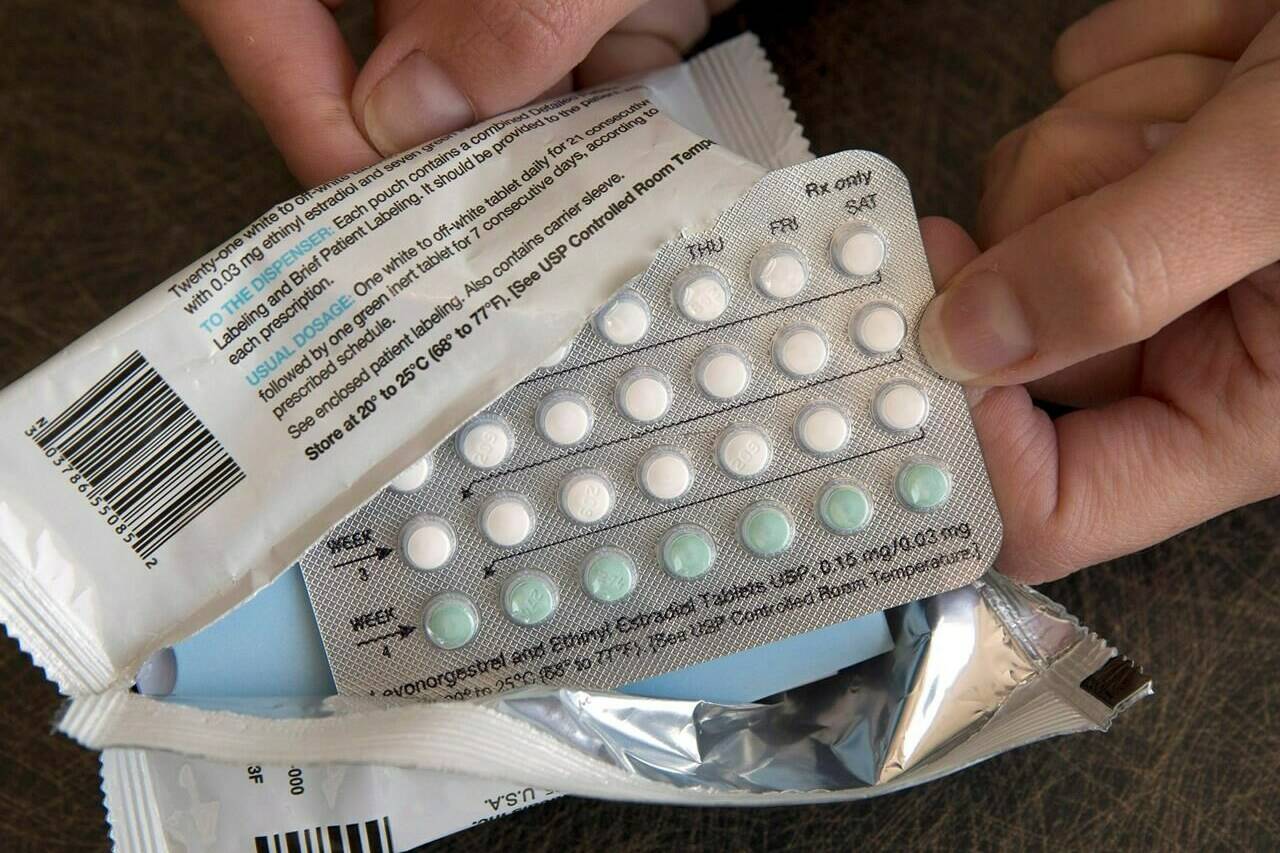If the government wants to solidify reproductive rights in Canada, NDP Leader Jagmeet Singh suggests it start by launching pharmacare with a full slate of birth control options.
Reproductive health has been in the spotlight since a leaked U.S. Supreme Court draft opinion revealed national abortion rights could be rescinded in that country.
Singh said access to abortion is a “huge concern” in Canada, and he wants to see more clinics and hospitals offering the service closer to people’s homes. But more immediately, he said the government can make sure people can at least afford contraceptives through its proposed national pharmacare plan.
“We know that the cost of contraceptives are prohibitive for a lot of people,” Singh said at a news conference Wednesday. “It costs too much if you don’t have a drug plan.”
As part of the Liberals’ confidence and supply agreement with the NDP, the federal government has until June 2025 to develop a list of essential medicines that would be covered under a national pharmacare plan.
Singh said he’s been clear with the government that the list should include contraceptives.
Canada is one of the only countries with universal health care that does not also have universal access to contraception for women, according to the authors of a 2019 University of British Columbia study on the affordability of birth control.
Canada has a patchwork of public and private insurance plans, and the cost of contraceptives can vary wildly from a few dollars to hundreds of dollars per year depending on the type of birth control and a person’s coverage.
Australians, by contrast, have their pick of birth control methods for about C$6.
The researchers at UBC found young women at risk of an unwanted pregnancy were more likely to rely on cheaper, less effective forms of birth control if they had lower household incomes. Having less money also put them at greater risk of forgoing birth control altogether.
The most effective types of birth control, like an intrauterine device, tend to come at the highest upfront cost, said lead author on the study, Elizabeth Nethery.
“If you can’t cover that yourself and can’t come up with that money … you may choose to use condoms,” she said.
The Canadian Paediatric Society also called for universal access to birth control for youth under the age of 25 as part of a 2019 position paper. The society pointed out there are even greater barriers when young people try to access prescribed birth control without their parents’ knowledge when covered by private insurance.
Ontario adopted the policy in 2018 as part of its youth pharmacare plan, and the provincial NDP have pledged to expand contraception coverage to people of all ages as part of the party’s current election campaign.
Leaving birth control out of a national pharmacare plan would cause “serious problems” for the Liberal-NDP deal, Singh said.
The World Health Organization’s model list of essential medicines, which serves as a guide to member nations, includes birth control pills and injectable hormonal contraceptives, as well as birth control devices like condoms, diaphragms, the vaginal ring, implantable contraceptives and intrauterine devices.
“It should be as broad as possible and if it doesn’t include contraceptives, that’s not appropriate. It is a an essential medication for women and it should be included in the formulary,” Singh said.
Nethery said she’d be shocked to see contraceptives left off the list of medications the government plans to cover once it eventually launches a pharmacare scheme.
That doesn’t mean women will be able scratch birth control off their monthly budgets any time soon.
The Liberals’ deal with the NDP doesn’t include a specific timeline for when Canadians would actually benefit from a pharmacare program, and the formulary isn’t due until the deal is up — when the NDP are likely to have far less leverage with the government.
Singh also agreed to a phased-in approach to pharmacare that might see a smaller list of essential medicines covered first.
“We believe that the list has to be as broad as possible. And then, in terms of the rollout, we can start with some critical medication first and then move onward,” he said.
Singh suggests starting with birth control and then moving on to things like heart, diabetes or cancer medications.
Health Minister Jean-Yves Duclos did not respond directly to questions about whether the government expects to see a full spectrum of birth control options included in the pharmacare formulary, or whether contraceptives would be prioritized during the eventual rollout of the program.
In a statement, his office said the government will always work to improve access to reproductive health. The statement points to the department’s 2019 decision to expand access to the abortion pill Mifegymiso by making it available without an ultrasound.
“We stand ready to work with any party willing to advance this issue,” the statement said.
—Laura Osman, The Canadian Press
RELATED: NDP expects phased-in approach to national pharmacare promise in deal with Liberals
RELATED: B.C. expands PharmaCare coverage for Crohn’s, MS, heart failure, birth control

